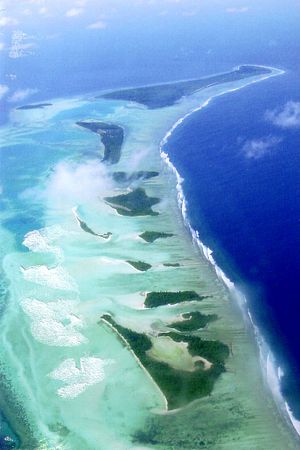Salman bin Abdulaziz Al Saud, king of Saudi Arabia, is on a rare tour this month to six Asian countries — Malaysia, Indonesia, Brunei, Japan, China, and the Maldives. Over at Al Jazeera earlier this week, I had a longer look at the geopolitical and geoeconomic impulses driving Saudi outreach to these six countries. I discuss Saudi interests in the above countries in detail, but want to dig in a bit deeper into the Maldives, which geographically and economically is a bit of the odd-one-out destination on Salman’s itinerary.
Regular readers of The Diplomat might have read my reflections over the past few years on Male’s steady democratic disintegration under the leadership of Abdulla Yameen. The watershed moment that marked a negative inflection point for liberal-minded democracy in the small archipelagic Indian Ocean nation was the early 2015 arrest and sham trial of Mohamed Nasheed, the country’s first democratically elected leader.
Outside of its democratic decline, the Maldives also occupies an ignominious place as one of the largest contributors on a per capita basis of foreign fighters to the Islamic State’s self-declared caliphate in Iraq and Syria. Currently only surpassed by Tunisia, radicalization and extremism in the Maldives has become more of a concern in recent years for neighboring states like India.
So, what’s going on with Saudi Arabia and the Maldives and how does Riyadh fit into all this?
Saudi Arabia’s puritanical Wahhabi religious movement has seeped into the Maldives over the years. One of the pathways by which this occurred has to do with the extent of people-to-people ties between Maldives and Pakistan, South Asia’s largest Muslim-majority country. Maldivian Islamic clerics and students have, over the years, been gradually exposed to Wahhabi ideology, which has come to shape both the island’s politics and even identity in recent years.
In 2015 — the same year the Saudis set up their first diplomatic mission in the country — Maldives and Saudi Arabia signed an agreement on religious cooperation, with Saudi financing guaranteed for ongoing mosque construction projects in the country. Maldives additionally is part of Saudi Arabia’s so-called Islamic Military Alliance, which was declared last year to unite Muslim-majority countries against the Islamic State. For Male, cozying up to Saudi Arabia is especially attractive as relations with New Delhi — the most proximal regional power — have soured since its democratic downturn. China, similarly, has been another partner of interest for the Maldivians.
Given how rare royal Saudi visits are — Indonesia, the world’s most populous Muslim-majority nation is seeing its first royal visit in 47 years — it’s remarkable that Male sees its first just within two years of Riyadh setting up a diplomatic mission. All this underlines just how quickly the Saudi-Maldivian bilateral relationship has progressed. King Salman’s interest in the small island state was seen before he ascended the throne after King Abudllah’s death; he visited the Maldives in 2014.
Salman’s objectives in Male this March will be worth watching closely. As I discuss in the Al Jazeera article, this six-country tour is largely animated by Saudi Arabia’s National Transformation Plan, which seeks to upend the country’s oil-dependent economic model. To this end, Saudi Arabia is reportedly looking to effectively purchase, via a 99-year lease, a Maldivian atoll — the Faafu Atoll specifically, currently a Maldivian administrative division. The sale is speculated to involve a forced relocation of the 4,000-some people currently living there. The Saudis would then develop the atoll, presumably exploring revenue-generating projects in tourism and even maritime commerce.
So, while the larger and more economically significant countries on Salman’s Asia tour may draw more attention, the Maldives isn’t a mere sideshow. For both Riyadh and Male, the visit will be an opportunity to seal-in important quid pro quos and elevate this fast-converging bilateral relationship.






























